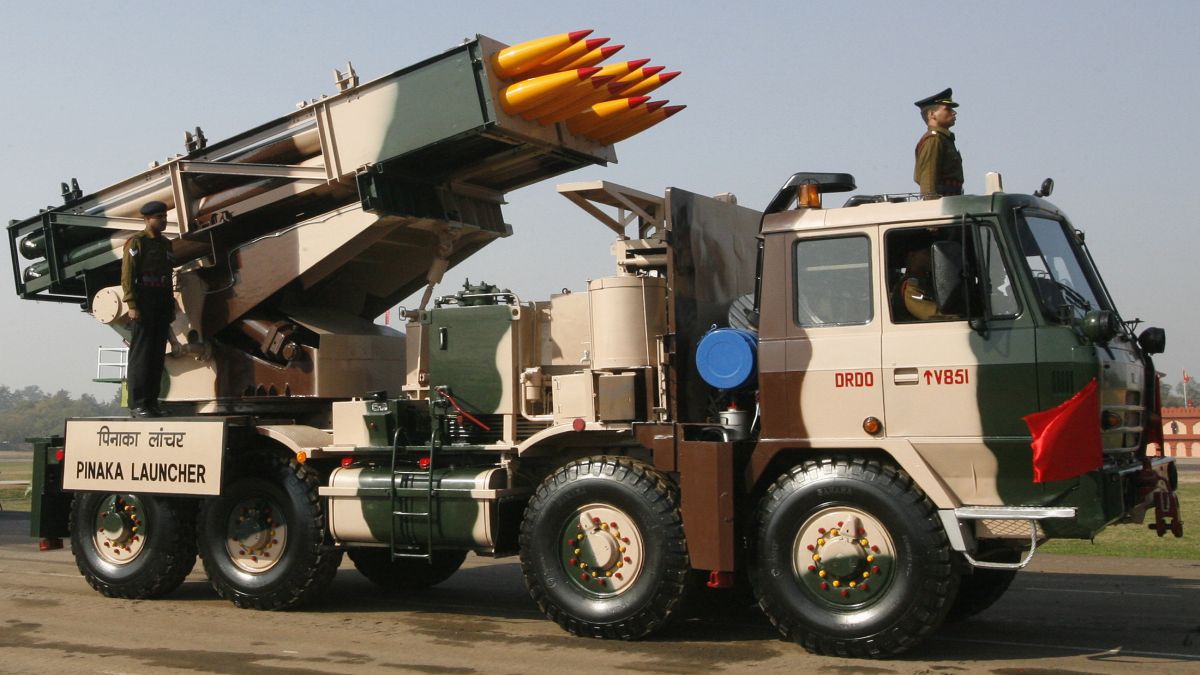India’s credential as a defence exporter is improving day by day. This comes as reports emerge that France is showing a keen interest in the Indian-made Pinaka multi-barrel rocket launcher systems. Indians have long touted the Pinaka as being on par with the US-made HIMARS (High Mobility Artillery Rocket Systems).
Speaking on the same, Brigadier General Stephane Richou, French Army staff general international affairs, was quoted as telling The Hindu, “Indians presented to my Chief of Army Staff last February the Pinaka. It is very interesting for us. We are organising evaluation of three-four best providers of this system, India being among them. We have a special mission that is going to come to India in the coming weeks, to evaluate both the launcher and the ammunition… We are considering the possibility among several other systems that we are considering.”
The remark by France’s Brigadier General Stephane Richou came as he visited India last week for the 20th Army staff talks.
Currently, the ‘Made in India’ Pinaka is exported to Armenia under an export contract valued at $250 million.
As interest grows for this weapon, here’s a better understanding of the Pinaka Rocket launcher.
Lethality of Pinaka, explained
The Pinaka weapon system , named after the bow of Hindu god Shiva, was developed by the Pune-based Armament Research and Development Establishment (ARDE), an important arm of the Defence Research and Development Organisation (DRDO).
The development of this weapon began in the late ’80s, as an alternative to the multi-barrel rocket launching systems of Russian make.
But what exactly is the Pinaka weapons system? In simple words, it is a multi-barrel rocket system, which can fire 12 rockets in just 44 seconds. An Indian Express report explains that a single battery of the Pinaka system consists of six launch vehicles, accompanied by the loader systems, radar and links with network based systems and a command post. One battery can neutralise an area one kilometre by one kilometre.
Currently, there are two variants of the Pinaka — Mark I, which has a range of around 40 kilometres and the Mark-II version that can fire up to 75 kilometres. There are plans to enhance the range of the system — first to 120 km and then even up to 300 km.
According to experts, the Pinaka rockets can reach a speed of Mach 4.7 (5,800 km/hr), making it very fast and difficult to intercept. The rocket’s warhead can have different designs for various combat uses. The launcher’s shoot-and-scoot capability enables it to escape the counter-battery fire, reports Eurasian Times.
The Pinaka weapons system is traditionally mounted on a Tatra truck for mobility, with experts adding that the weapons system allows ground forces a deep strike option and also possess the capability of hitting critical military installations.
Use of Pinaka by India’s Armed Forces
As of now, the Indian Army operates four Pinaka regiments, with six more on order. However, it first came into use during the Kargil War of 1999, quite successfully against the Pakistan army.
It was also deployed more recently at India’s border with China amid tensions over Ladakh .
Armenia’s use of the Pinaka
The Pinaka system has already gained export success with orders from Armenia and interest from other countries. In fact, Yerevan became the first export customer for the indigenously developed Pinaka.
In October 2022, it was reported that Armenia has placed an export order to be completed within two years.
India’s export of the Pinaka to Armenia had even prompted Azerbaijan to register its protest with New Delhi. Hikmet Hajiyev, foreign policy adviser to the president of Azerbaijan, had called on the Indian Ambassador to the country, Sridharan Madhusudhanan, expressing concerns about the expanding military cooperation between Armenia and India. It also requested a reconsideration of India’s decision to supply lethal weapons to Armenia.
Armenia and Azerbaijan are engaged in a conflict over control of the Nagorno-Karabakh region. The conflict resulted in a 45-day war in September 2020, which was brought to an end by a peace deal brokered by Russia.
Besides Armenia and France, Indonesia and two other South American nations have also shown interest in the Pinaka.
Comparison to the HIMARS
Indian defence officials call the Pinaka one of the best long-range weapons in their arsenal, comparing it to America’s HIMARS .
The HIMARS consists of a medium-sized tactical truck loaded with six 227-millimetre GPS-guided rockets. It boasts a range of more than 69 km. The rocket is thirteen-feet-long and known as the Guided Multiple Launch Rocket System (GMLRS). Each rocket has a 200-pound, high-explosive warhead, and GPS guidance ensures each rocket can land within 16 feet of the designated aiming point.
HIMARS has been developed by Lockheed Martin and first appeared publicly in 1993. HIMARS has expanded its global presence and is exported to several countries including Jordan, Singapore and the United Arab Emirates.
In August, the US State Department approved Norway’s acquisition of HIMARS.
However, HIMARS’s lethality has become world renowned owing to its use in the ongoing Russia-Ukraine war. Washington sent the first four HIMARS to Ukraine in early June 2022, and by late July, Ukrainian forces had claimed to have struck more than 100 “high-value” military targets.
With inputs from agencies
)